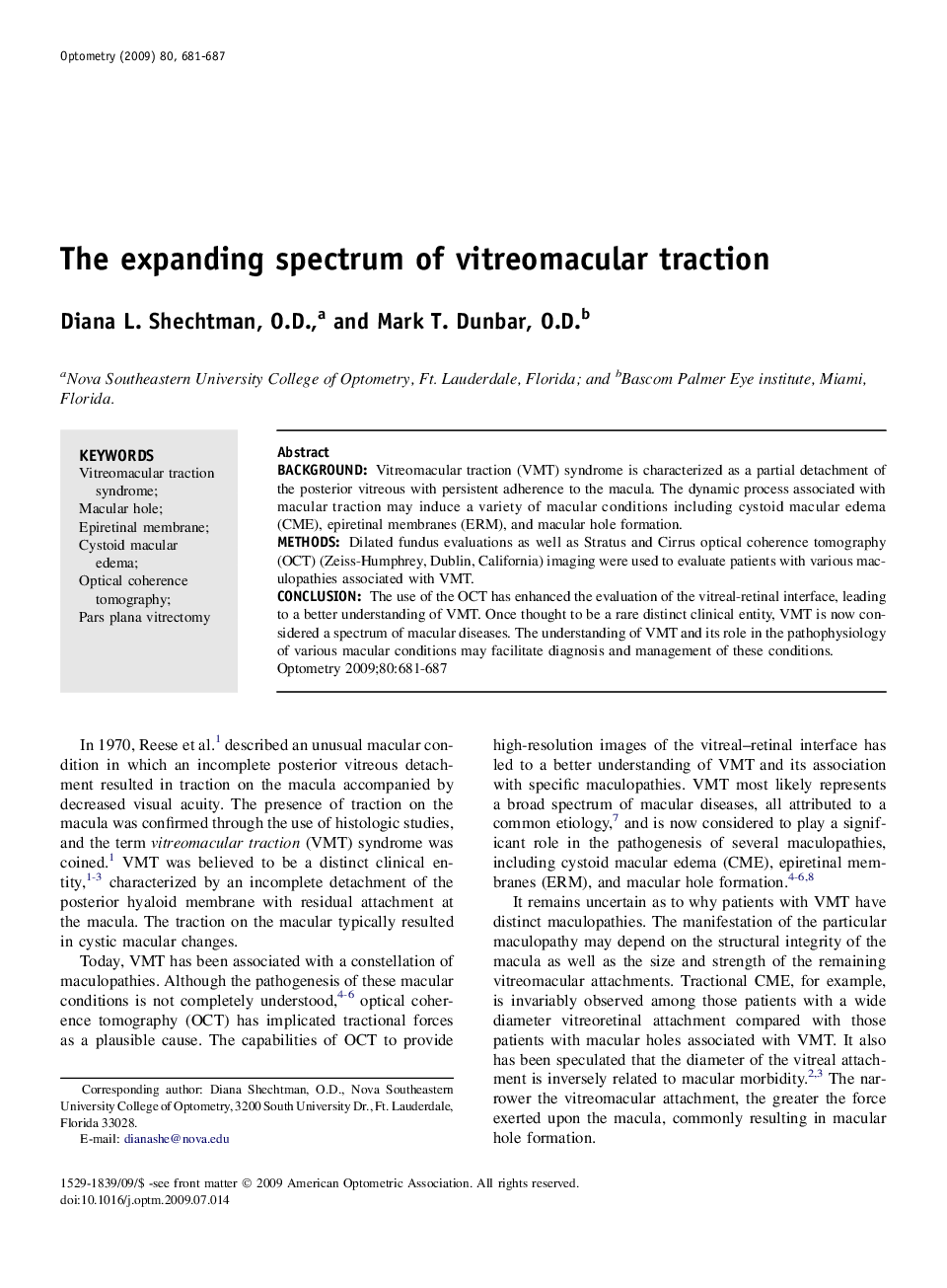| Article ID | Journal | Published Year | Pages | File Type |
|---|---|---|---|---|
| 2700049 | Optometry - Journal of the American Optometric Association | 2009 | 7 Pages |
BackgroundVitreomacular traction (VMT) syndrome is characterized as a partial detachment of the posterior vitreous with persistent adherence to the macula. The dynamic process associated with macular traction may induce a variety of macular conditions including cystoid macular edema (CME), epiretinal membranes (ERM), and macular hole formation.MethodsDilated fundus evaluations as well as Stratus and Cirrus optical coherence tomography (OCT) (Zeiss-Humphrey, Dublin, California) imaging were used to evaluate patients with various maculopathies associated with VMT.ConclusionThe use of the OCT has enhanced the evaluation of the vitreal-retinal interface, leading to a better understanding of VMT. Once thought to be a rare distinct clinical entity, VMT is now considered a spectrum of macular diseases. The understanding of VMT and its role in the pathophysiology of various macular conditions may facilitate diagnosis and management of these conditions.
